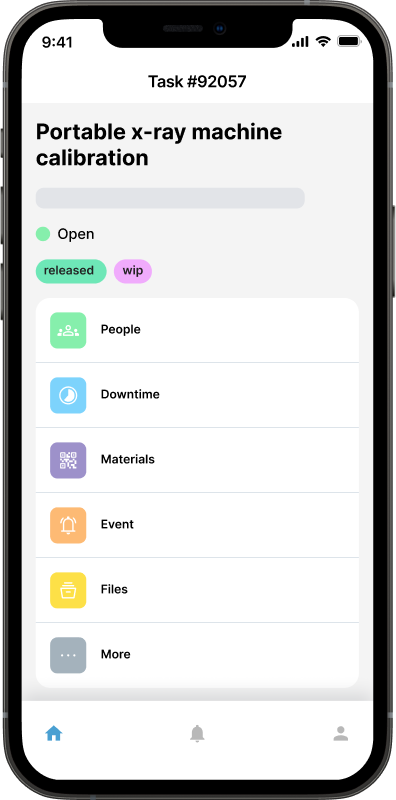Preventive vs Reactive Maintenance: Why CMMS is the Game-Changer

The choice between preventive and reactive maintenance isn't just a matter of strategy—it's a decision that directly impacts your operational efficiency, equipment lifespan, maintenance costs, and the morale of your maintenance team. Organizations that default to a reactive approach often find themselves in a constant cycle of breakdowns, downtime, and unplanned costs. On the other hand, preventive maintenance, when properly implemented, shifts your team from firefighting to future-proofing.
But how do you make this shift at scale, especially in dynamic manufacturing or facility environments?
That’s where Computerized Maintenance Management Systems (CMMS) come in. Often integrated with work order management software, a modern CMMS is no longer optional—it’s foundational for organizations looking to make data-driven decisions and elevate their maintenance operations.
We'll break down five compelling reasons why a CMMS is not just useful, but essential for mastering preventive maintenance over reactive maintenance.
What Is Preventive vs. Reactive Maintenance?
Before diving in, let’s quickly define the two approaches:
Reactive Maintenance: Also known as “breakdown maintenance,” this approach involves fixing equipment only after a failure occurs. It’s simple—but risky and expensive.
Preventive Maintenance (PM): This strategy involves routine, scheduled maintenance to prevent equipment failures before they happen. It’s proactive, and it saves time and money over the long term.
Without the right systems in place, executing an effective preventive maintenance strategy is difficult. That’s why organizations are turning to CMMS software to gain the visibility, control, and automation needed to stay ahead.
5 Compelling Reasons Why CMMS is the Key
When comparing preventive and reactive maintenance, CMMS is the key for the following reasons:
Reason #1: Enhanced Asset Reliability
One of the most tangible benefits of CMMS is increased asset reliability. With a CMMS, you can:
Schedule preventive maintenance based on time, usage, or condition
Set up automatic reminders and work order triggers
Access asset maintenance history, manuals, and warranty data
Instead of reacting to equipment breakdowns, your team can predict and prevent them. The result? Fewer surprises, longer asset life, and less downtime.
A study by Plant Engineering found that companies using preventive maintenance report up to 40% fewer breakdowns compared to those relying mostly on reactive methods.
Reason #2: Cost Savings
While preventive maintenance requires planning and resources, it’s far more economical than waiting for things to break. Reactive maintenance often results in:
Emergency repairs and expensive rush parts
Unscheduled production downtime
Overtime labor costs
Accelerated wear and tear on equipment
A CMMS enables better resource forecasting, inventory control, and timely maintenance execution, helping you avoid costly surprises.
According to the U.S. Department of Energy, preventive maintenance can result in 12% to 18% cost savings compared to reactive maintenance.
By reducing unplanned downtime and emergency costs, CMMS pays for itself quickly.
Reason #3: Improved Workforce Productivity

In a reactive maintenance model, your technicians are constantly rushing to fix urgent issues, often with limited information or tools at hand. This reactive chaos leads to:
Poor use of technician time
Missed maintenance windows
Low morale and burnout
CMMS software changes this dynamic. With mobile access to digital work orders, asset data, checklists, and parts availability, your team can:
Plan their day more efficiently
Respond faster to issues with the right tools and knowledge
Stay on top of preventive tasks without constant micromanagement
You also gain better visibility into technician performance and workload, so you can allocate resources more effectively.
Reason #4: Actionable Data and Analytics
You can’t improve what you don’t measure. A CMMS acts as your central maintenance intelligence hub, gathering data across:
Equipment uptime/downtime
Mean time between failure (MTBF)
Maintenance task completion rates
Inventory usage and restocking
Technician productivity
With integrated reporting and dashboards, maintenance managers can spot trends, justify budget decisions, and plan smarter. For example, if a certain asset has frequent breakdowns despite regular PMs, it may be time for a deeper root cause analysis, or even replacement.
CMMS turns your maintenance team from task-doers into strategic contributors.
Reason #5: Compliance and Documentation
Many industries require strict compliance with maintenance standards, whether it’s ISO, OSHA, FDA, or internal quality systems. CMMS helps you stay audit-ready with:
Time-stamped work order records
Digital asset histories
Technician logs and signatures
Automatic documentation for inspections
Rather than digging through file cabinets or spreadsheets, your compliance data is always at your fingertips. This reduces legal risks and makes audits stress-free.
CMMS Bridges the Preventive-Reactive Gap
The reality is: some reactive maintenance is inevitable. Not every failure can be predicted or prevented.
A good CMMS doesn’t just push preventive maintenance - it also helps manage reactive tasks efficiently when they arise, by:
Allowing fast creation of corrective work orders
Assigning and dispatching technicians in real time
Logging failures and root causes for future prevention
This balance between prevention and rapid response is what separates world-class maintenance teams from the rest.
Choose Proactive Over Pain
The shift from reactive to preventive maintenance isn’t just about tools, it’s about mindset and strategy. But having the right system makes all the difference.
A modern CMMS helps your organization:
Maximize asset performance
Minimize unplanned costs
Improve technician efficiency
Generate valuable data insights
Stay compliant and audit-ready
If you’re still managing maintenance with spreadsheets or disjointed systems, it’s time to upgrade.
Start with a CMMS built for simplicity, speed, and scalability. Explore Maintainly and see how easy preventive maintenance can be.
Try Maintainly today - ditch the fire drills and build a maintenance program you can trust.

